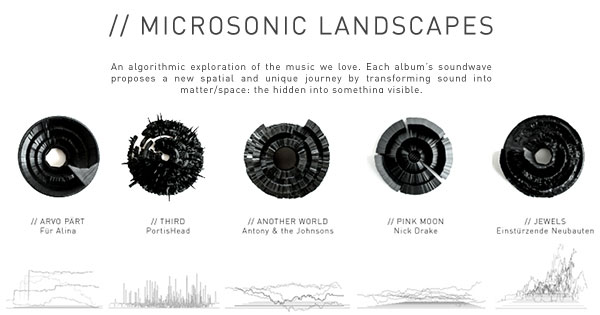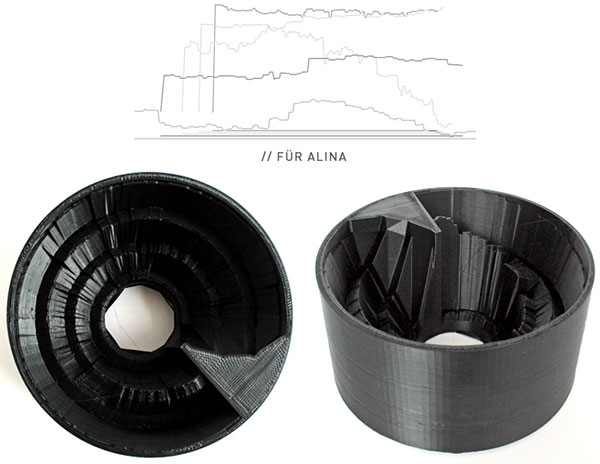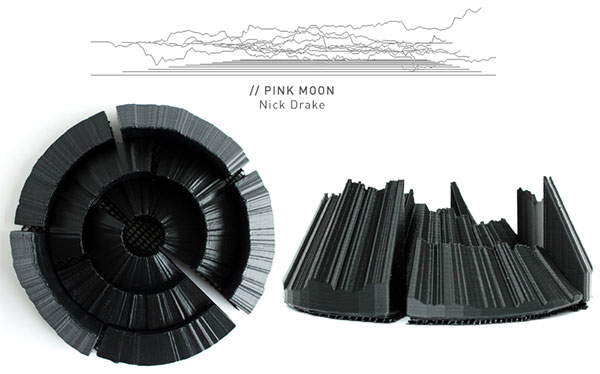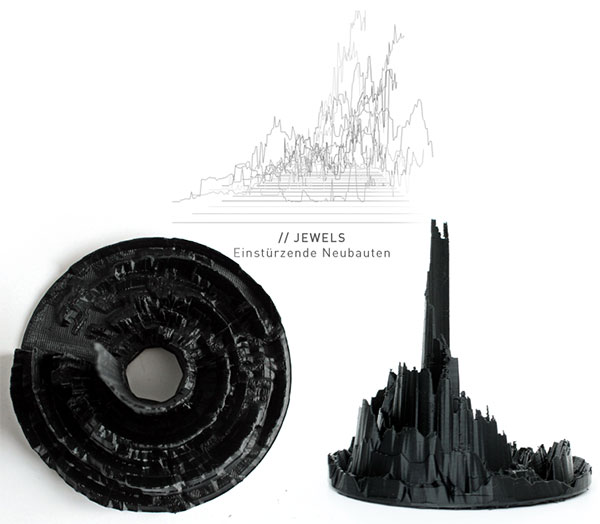Realitat’s Microsonic Landscapes use 3-D printing machinery and algorithmic mapping to arrive at physical manifestations of recorded musical sound. These handheld sculptures are unique amongst one another because each represents the formalization of a different musical recording. In this instance, each recording is actually a full-length album; the albums chosen were picked according to Realitat’s musical tastes. Their self-stated mission, to create “an algorithmic exploration of the music we love,” is successfully completed. Each album is copied onto a program called Processing which maps and extrapolates the sounds on each song into coordinates that the 3-D printer can turn into solid mass. The objects are printed in a series of rings, but aside from that, the form taken can vary wildly, with each record registering unique patterns of height, depth, solid, and void. The process employed here represents a direct and literal translation of sound into form. There are no variables or inputs applied to the algorithms that would manipulate or affect the final form.
This project represents a successful attempt at using digital means to map, extrapolate, and formalize musical sound. This process is rendered through the use of digital mapping software and a 3-D printer, creating unique and specific formations with differing patterns of solid and void, as well as height and depth.










